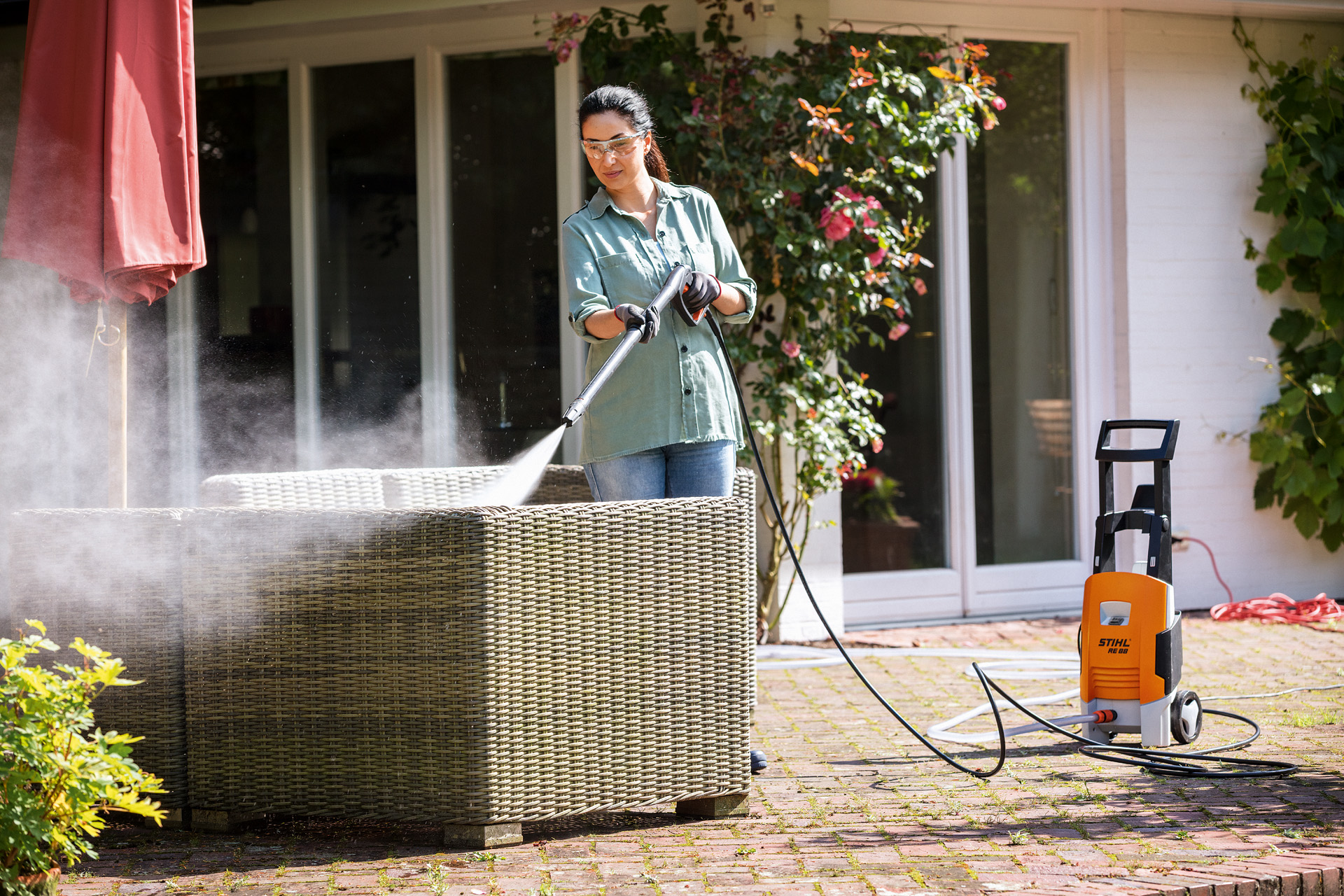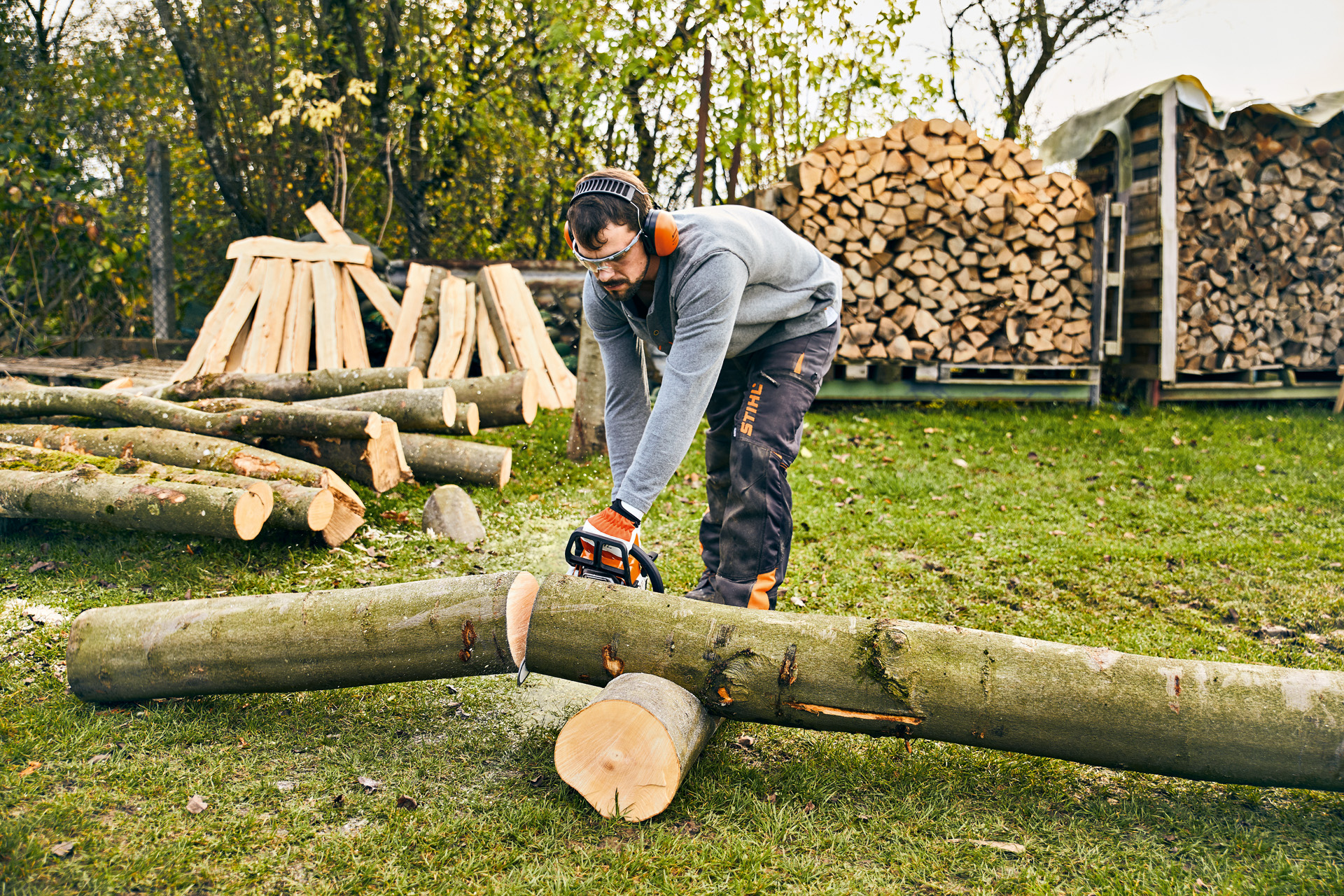Spring clean your outdoor space: how to clean decking
After your terrace has suffered the stresses of winter, you need to know how to clean wooden decking so it looks great and lasts longer.
13.07.2023

How to clean decking: doing it right
Winter can leave your decking dirty and discoloured. In shady areas, in particular, an unsightly green coating builds up on the surface, which can make it slippery and hazardous. You’ll be glad to hear that cleaning any algae and taking care of your decking is quick and easy to do using household cleaning products. And with the right attachment, a pressure washer can also be a great way to clean your decking gently and effectively. Here’s everything you need to know.
The right equipment for cleaning decking boards
You should take care to sweep your decking regularly, as this prevents dirt from building up. You can just use a stiff broom and scrubbing brush to give your decking a thorough spring clean. If you have a pressure washer, a wash brush attachment makes an excellent tool for cleaning a wooden deck.

Choose the right cleaning method to care for your decking
As a general rule, you should never use the direct jet of a pressure washer to clean wooden decking. This is because the pressure can wash away the wood adhesive, and can also cause splinters and make the wood brittle. We recommend that you first find out what kind of wood your decking is made from, and decide on the most suitable decking care methods based on the durability class of the material:
- Class 1 and 2 hardwoods include tropical timbers such as bangkirai and teak, but also robinia and oak. These woods are highly durable, robust and hard-wearing. They can be cleaned using a pressure washer with a wash brush attachment.
- Class 3 and 4 includes softer woods such as beech, spruce and pine. These woods are a little less durable and should ideally be cleaned manually with a stiff broom and scrubbing brush. You will find advice below about what cleaning fluids you can use on softwood decking.
How to clean decking with a pressure washer
If your decking is suitable for cleaning with a pressure washer and a wash brush, you can get straight to work. Just secure the attachment and set the water pressure to a low level. Don't use too high a water pressure as this can damage the wooden surface, and decking wood that is roughened in this way can become brittle or even split.
Make sure you clean the entire surface evenly. This is to keep the colour uniform on the surface you have cleaned.
For hard surfaces and untreated wood, we recommend using our STIHL CS 100 stone and façade cleaner, which reliably removes stubborn green deposits.
Using household cleaning products for decking care
If you don’t have a pressure washer at home, or if your decking is not suitable for cleaning with one, you can use simple household cleaning fluids instead. An environmentally friendly and inexpensive method is to use soda crystals (sodium carbonate) or traditional soft soap.
Cleaning your decking using soda crystals and starch
If you want clean your decking with soda crystals and starch, we recommend putting in a little extra effort to turn them into a powerful cleaning paste. First, stir 2–3 tablespoons of starch into 500ml of lukewarm water, and keep stirring until all the lumps have gone. Pour this starch mixture into a large pan containing 5 litres of lukewarm water, then add 100g of soda crystals (sodium carbonate) and boil until the liquid starts to thicken. You can now use this paste for easy and gentle cleaning as part of your decking care routine. Just apply it to the wooden boards and spread it evenly with a brush, then leave the paste to work for a few hours. Finally, rinse the home-made cleaning paste off the decking with water.
Cleaning your decking with traditional soft soap
Traditional soft soap is also a great option for decking care. This old-fashioned product is much more gentle than the “hard” soap that is more widely used today. It can be bought from horticultural suppliers, as it has many outdoor applications. Always take care not to allow too much wastewater from it to make its way into your garden.
Apply the soap undiluted or according to instructions, and work it in with a brush. With a little patience, you can make sure every inch of your decking is cleaned. Finally, rinse it all down – use a garden hose or a watering can.
Never use vinegar on decking
Any acidic cleaning agents (including vinegar) will do no favours for your wooden decking boards. We recommend that you avoid these completely for decking care, so you can enjoy your terrace for a long time to come.

Other tips on how to care for your decking
You’ve already got a lot done in terms of cleaning – but there’s still a little more work to do. To be really thorough, look below the surface!
Clean the underside of your decking
Out of sight, out of mind - that’s true when it comes to decking too. Anything that falls between or underneath the planks gets forgotten - until it starts to smell. To stop that from happening, you will need to venture underneath the decking.
Make it part of your regular decking care to also clean between the substructure and the boards, removing foliage and other debris using a vacuum shredder or a blower. This helps to prevent rotting of the decking from underneath, as well as keeping fungus and other pests at bay.
Decking care: oiling your decking
As a final step, after your decking is clean and dry we recommend that you oil it to guarantee that the wood is properly protected.
Let the decking dry for 24 hours after cleaning before you oil it. If the wood is still damp, applying oil could inadvertently trap moisture inside, which will cause the wood to rot over time. An annual coat of oil or varnish is a great step for long-term care, and it also means your decking looks great now and is ready for the new gardening season.
Summary: How to clean decking
- Clean your decking early in the year to restore it after the stresses of winter.
- Clearing and sweeping is the first step.
- If the decking is made from a suitable wood, a pressure washer with wash brush attachment makes the work easy and gentle.
- Alternatively, you can also use household cleaning fluids such as soda crystals or traditional soft soap.
- Vinegar should never be used as it can damage the wood.
- After cleaning, we recommend that you oil the decking for long-lasting care.


